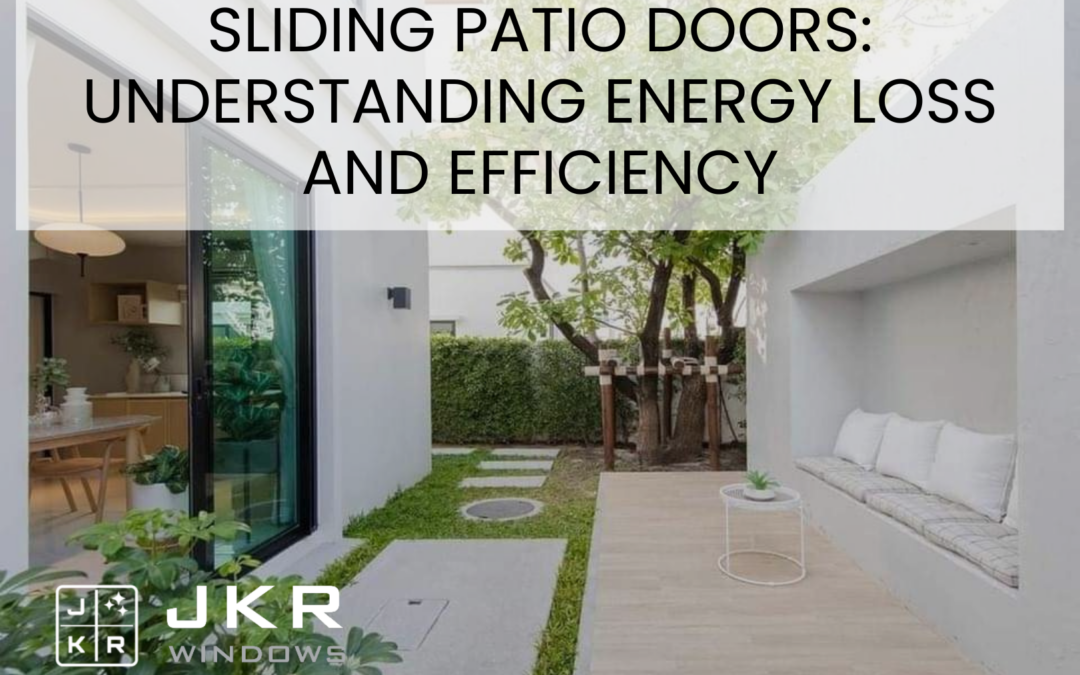Sliding patio doors are an excellent feature for any home, providing an appealing, seamless transition between indoor and outdoor spaces. However, they can sometimes present challenges when it comes to energy efficiency. Here’s a look at how energy loss occurs through sliding patio doors and ways to address these issues effectively.
How Sliding Patio Doors Cause Energy Loss
Heat Transfer and Air Leaks
Due to their large glass surfaces, sliding doors can result in higher heat transfer, meaning indoor heat can escape during winter while outdoor heat penetrates in summer. This can increase the load on heating and cooling systems. Traditional, single-pane sliding doors often suffer from poor insulation, exacerbating heat loss. Air leaks from frames or unsealed edges can also lead to drafts, further reducing energy efficiency in your home.
Conduction and Radiation
Standard glass used in many sliding doors lacks insulation, so heat is easily conducted through the glass. Additionally, the glass can allow solar radiation to enter your home, leading to unwanted temperature increases. This is especially an issue in sunnier regions where prolonged exposure can make indoor spaces warmer and increase reliance on air conditioning.
Benefits of Energy-Efficient Sliding Patio Doors
Energy-efficient sliding patio doors can help mitigate these issues by incorporating insulated glass, which significantly reduces heat transfer. Double or triple glazing, common in energy-efficient designs, creates an additional barrier to slow down temperature changes. Low-emissivity (Low-E) coatings are often applied to these doors, reflecting heat and UV rays to reduce both indoor temperature swings and damage to furniture.
Another feature of modern energy-efficient sliding doors is their ability to block UV rays, minimizing the risk of fading in carpets, flooring, and furniture. This is especially beneficial in homes with expansive views where sunlight exposure is frequent.
Improved Insulation Options
Quality energy-efficient patio doors are designed with advanced materials and technologies that address the insulation problem. For example, argon gas can be used between panes to enhance insulation. Frames are often constructed from vinyl, fiberglass, or composite materials instead of traditional aluminum, reducing heat transfer due to their non-conductive properties. Weather-stripping and compression seals further prevent drafts from seeping through, maximizing energy retention inside the home.
Energy Savings and Environmental Impact
By opting for energy-efficient sliding patio doors, homeowners can enjoy substantial cost savings on their energy bills. The insulation reduces the need for constant heating and cooling, which in turn lowers energy consumption. Over time, this energy conservation contributes to a smaller carbon footprint, making energy-efficient doors an environmentally friendly choice.
Selecting the Right Sliding Patio Door
When choosing sliding patio doors, look for those with high energy performance ratings, typically denoted by an ENERGY STAR certification. These doors undergo testing and meet criteria for energy efficiency set by the Environmental Protection Agency (EPA). Opting for reputable brands that offer warranties on energy-efficient products can also be beneficial, ensuring long-term performance and savings.
Final Thoughts
Energy-efficient sliding patio doors are a valuable investment for homeowners. They enhance a home’s aesthetics and contribute to energy savings, comfort, and environmental responsibility. For those seeking energy-efficient sliding doors, companies like JKR Windows offer options that incorporate modern insulation technologies tailored to different climates and home needs. This way, you can enjoy the benefits of sliding patio doors without compromising on energy efficiency or comfort.
For more details about energy-efficient sliding patio doors, JKR Windows has insightful resources and guides on choosing the right doors for energy savings and enhanced home security.

